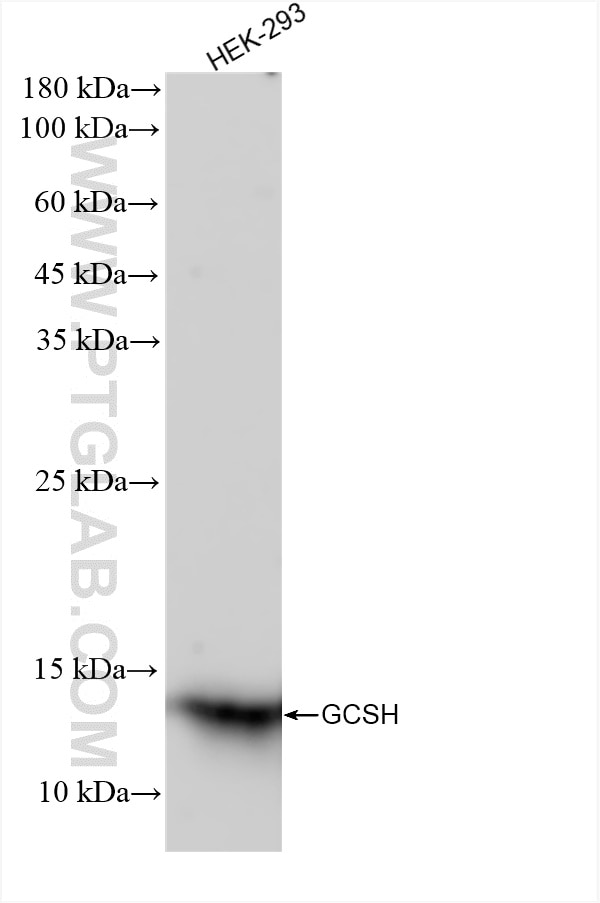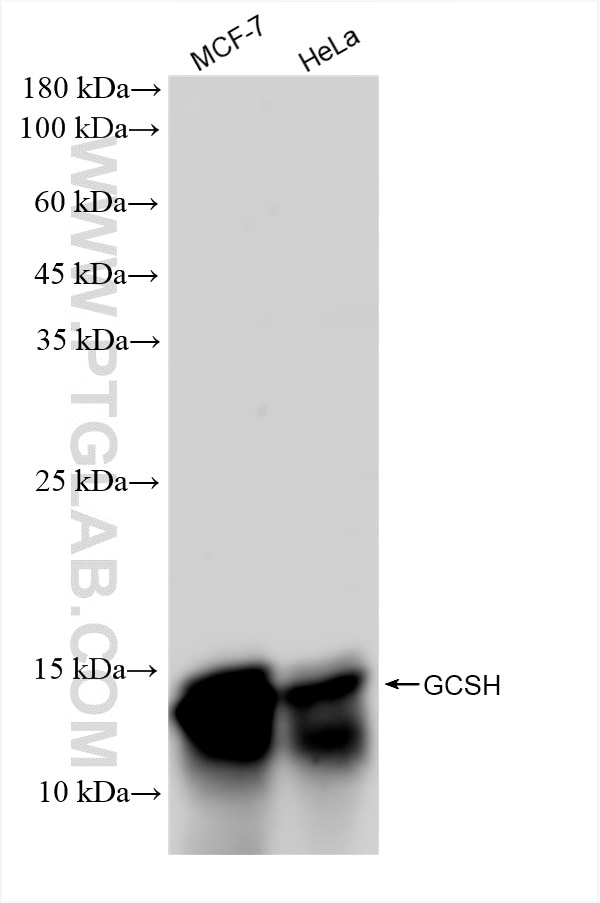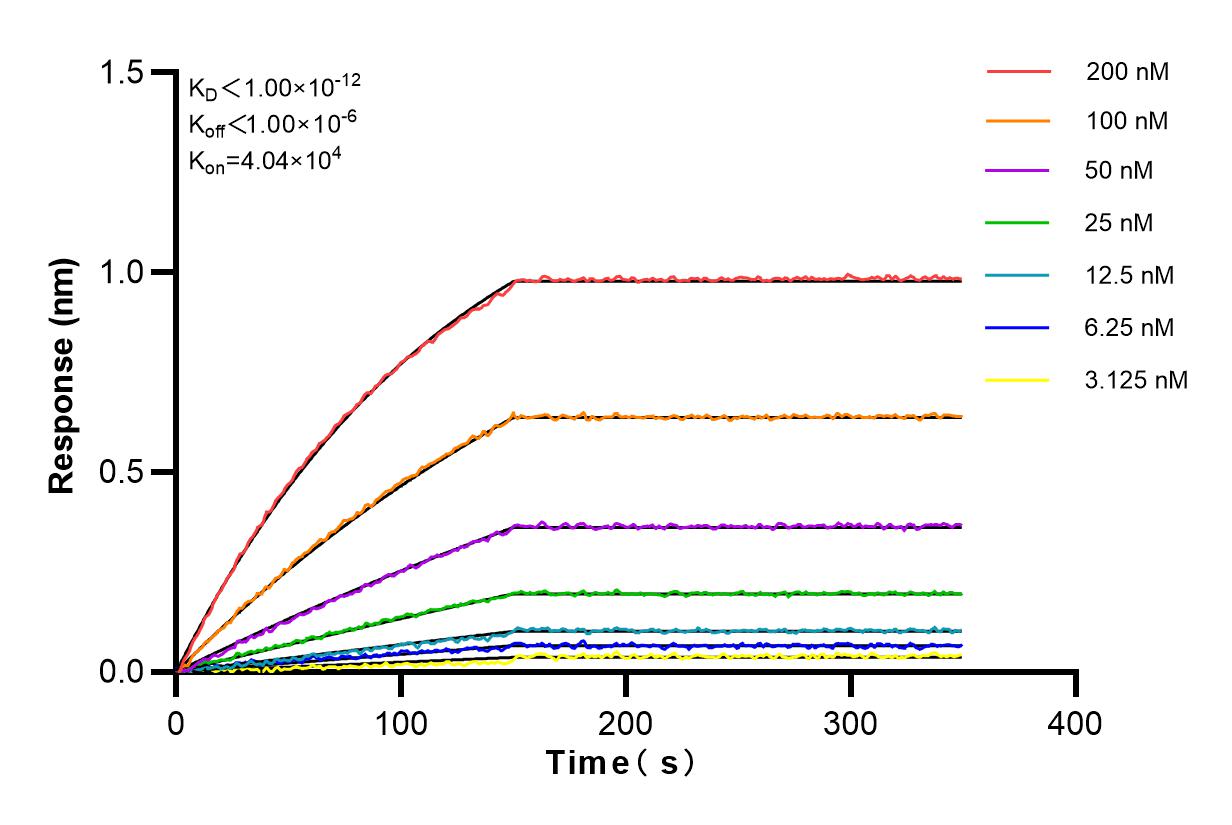GCSH Rekombinanter Antikörper
GCSH Rekombinant Antikörper für WB, ELISA
Wirt / Isotyp
Kaninchen / IgG
Getestete Reaktivität
human
Anwendung
WB, ELISA
Konjugation
Unkonjugiert
CloneNo.
230505A3
Kat-Nr. : 83012-5-RR
Synonyme
Geprüfte Anwendungen
| Erfolgreiche Detektion in WB | HEK-293-Zellen, HeLa-Zellen, MCF-7-Zellen |
Empfohlene Verdünnung
| Anwendung | Verdünnung |
|---|---|
| Western Blot (WB) | WB : 1:5000-1:50000 |
| It is recommended that this reagent should be titrated in each testing system to obtain optimal results. | |
| Sample-dependent, check data in validation data gallery | |
Produktinformation
83012-5-RR bindet in WB, ELISA GCSH und zeigt Reaktivität mit human
| Getestete Reaktivität | human |
| Wirt / Isotyp | Kaninchen / IgG |
| Klonalität | Rekombinant |
| Typ | Antikörper |
| Immunogen | GCSH fusion protein Ag10174 |
| Vollständiger Name | glycine cleavage system protein H (aminomethyl carrier) |
| Berechnetes Molekulargewicht | 19 kDa |
| Beobachtetes Molekulargewicht | ~15 kDa |
| GenBank-Zugangsnummer | BC000790 |
| Gene symbol | GCSH |
| Gene ID (NCBI) | 2653 |
| Konjugation | Unkonjugiert |
| Form | Liquid |
| Reinigungsmethode | Protein A purfication |
| Lagerungspuffer | PBS with 0.02% sodium azide and 50% glycerol |
| Lagerungsbedingungen | Bei -20°C lagern. Nach dem Versand ein Jahr lang stabil Aliquotieren ist bei -20oC Lagerung nicht notwendig. 20ul Größen enthalten 0,1% BSA. |
Hintergrundinformationen
GCSH(Glycine cleavage system H protein, mitochondrial) is a component of the glycine cleavage system loosely associated with the mitochondrial inner membrane and has lipoic acid as a prosthetic group. The full-length GCSH cDNA encodes a precursor protein of 173 amino acids and a mature protein of 125 amino acids. The lipoylation of H-protein occurs in mitochondria which probably contain an activated form of lipoic acid as well as other components required for the transfer of lipoic acid to the protein(PMID:2211640). Defects in GCSH are a cause of non-ketotic hyperglycinemia (NKH).
Protokolle
| PRODUKTSPEZIFISCHE PROTOKOLLE | |
|---|---|
| WB protocol for GCSH antibody 83012-5-RR | Protokoll herunterladen |
| STANDARD-PROTOKOLLE | |
|---|---|
| Klicken Sie hier, um unsere Standardprotokolle anzuzeigen |





